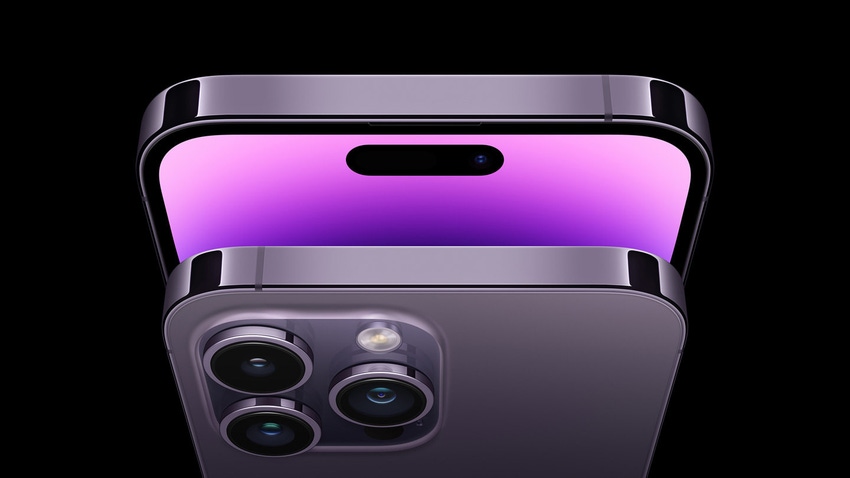Apple gets into the satellite game with its latest iPhones
US gadget giant Apple had its annual major product refresh, featuring the usual incremental improvements and a couple of milestones.
September 8, 2022

US gadget giant Apple had its annual major product refresh, featuring the usual incremental improvements and a couple of milestones.
There are now four flavours of iPhone following Apple’s belated conversion to market segmentation. There’s the standard, vanilla one – now the iPhone 14 – and it’s slightly bigger ‘Plus’ version. Then there’s the iPhone 14 Pro, which has some upgraded components and also comes with a supersize option, in this case given the ‘Max’ descriptor. Standalone entry-level UK pricing is: £849, £949, £1,099 and 1,199, respectively.
You’ll need to find over a grand to get access to many of the latest new features, however, with Apple preferring to restrict their debut to the Pro. Countless consumer tech sites have already obsessed over the hardware and software minutiae of the new iPhones so if you want to know more about them in general we suggest you refer to their effusions. Our first impression is that it’s the standard evolutionary, as opposed to revolutionary, offering, which the canned quote below does little to alter.
“iPhone 14 Pro introduces a camera system that empowers every user — from the casual user to the professional — to take their best photos and video, and innovative new technologies like the Always-On display and the Dynamic Island, which offers new interactions for notifications and activities,” said Greg Joswiak, Apple’s SVP of Worldwide Marketing. “Groundbreaking safety capabilities bring users even more security, offering help when they need it most. And with the incredibly powerful and efficient A16 Bionic chip and all-day battery life, this is the best iPhone yet.”
Having said that, there are a couple of significant developments and, what’s more, they apply to all four devices. In the US the new iPhones will have the ability to fall back onto satellite connectivity for emergency messaging. This is the sort of thing recently (presumably pre-emptively) announced by SpaceX and TMUS and already offered by Lynk, among others.
Apple’s entry is the strongest endorsement yet of this technology. The company is not in the habit of allowing its technology partners to steal the spotlight, however fleetingly, but and SEC filing reveals the satellite provider to be relatively unheralded US company Globalstar. The service will only be available to US customers initially and you have to wonder which service iPhone users that also get their service from TMUS will default to when the latter eventually gets its satellite-direct-to-phone offering up and running.
“The just-announced satellite capabilities from Apple, as well as T-Mobile and SpaceX’s announcement of smartphone satellite connectivity coming next year, are both milestone moments for the communications industry,” said – Joe Hogan, CTO of 5G and Network at Amdocs. “While they are both small steps toward a world where consumers have a constant connection wherever they are, regardless of network, it sets the stage for future innovations that can close the digital divide and further improve our society. Essentially, we’re moving to a world of ubiquitous connectivity. Expect this to be an area of great interest in 2023.”
The other milestone, again restricted to the US initially, is the removal of the physical SIM card tray in favour of an eSIM-only approach. Such a move seems inevitable for the broader industry but, as is so often the case, Apple’s legitimising of it will probably catalyse a wholesale shift. The main significance of eSIM, apart from the environmental benefit of no longer having to produce the physical ones, is that they make switching providers much easier thus, in theory, improving choice.
““Consumers that go abroad a lot may find it cheaper and easier to access a local operator via an eSIM and benefit from local rates rather than roaming with their main provider,” said Luc Vidal, Head of M2M/IoT Business at BICS. “It will also provide businesses with this same level of flexibility for employees that have to travel abroad.The telecoms industry is already working on the next step beyond eSIM, iSIM, which is effectively an invisible software solution that is integrated into the processor of a device and will save even more space, power and make it easier to manufacture more connected devices for the internet of things.”
Apple was wise not to restrict ‘Emergency SOS via satellite’ to its more expensive as appearing to profiteer from something like that would be a bad look. The fact that the process is far from straightforward and involves significant delays illustrates how much in its infancy the satellite-direct-to-phone industry still is. Nonetheless it has emerged at this year’s must-have telecoms tech, which should ensure its accelerated maturation.
Get the latest news straight to your inbox. Register for the Telecoms.com newsletter here.
About the Author(s)
You May Also Like








.png?width=300&auto=webp&quality=80&disable=upscale)


_1.jpg?width=300&auto=webp&quality=80&disable=upscale)


.png?width=800&auto=webp&quality=80&disable=upscale)